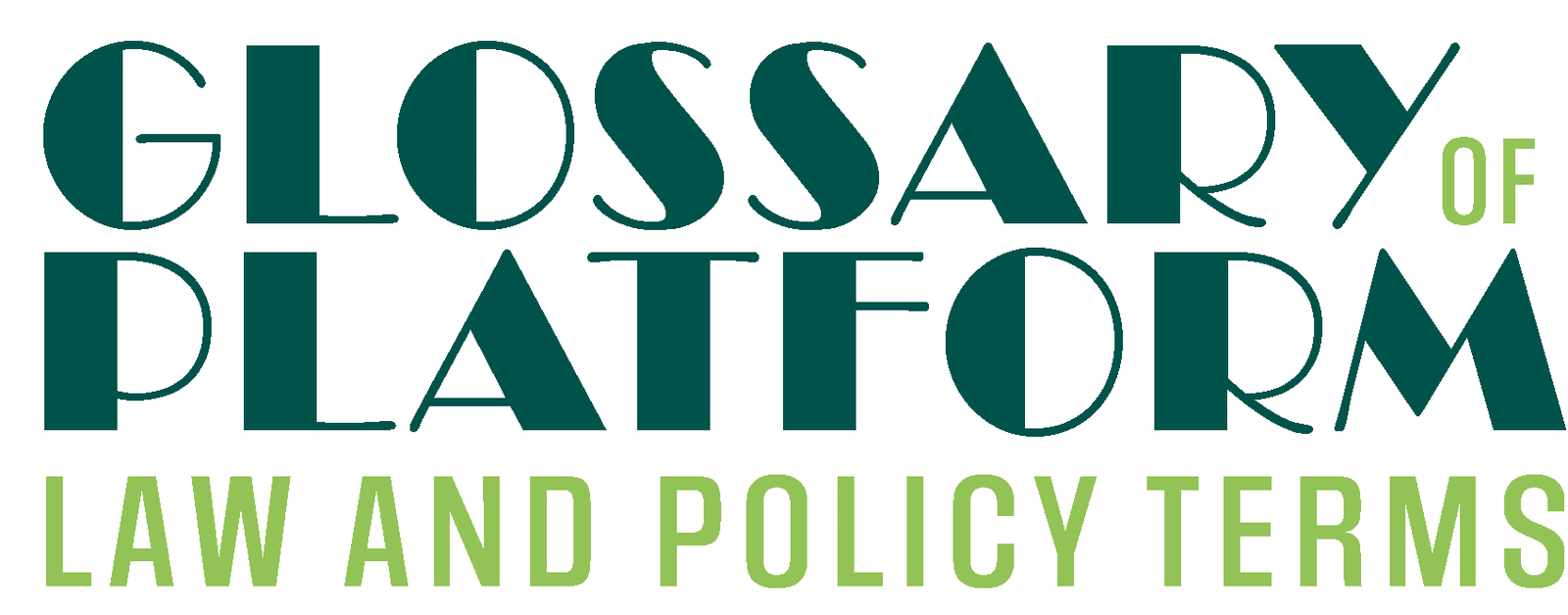Clara Almeida (16/12/2021). Aggregator. In Belli, L.; Zingales, N. & Curzi, Y. (Eds.), Glossary of Platform Law and Policy Terms (online). FGV Direito Rio. https://platformglossary.info/aggregator/.
Author: Clara Almeida
The term ‘aggregators’ refers to digital platforms that have as an
economic activity the matching of providers with consumers. To
be considered an aggregator, a digital platform must present three
defining characteristics: (1) direct relationship with users; (2) zero
marginal cost for serving users; and (3) demand-driven multi-sided
networks with decreasing acquisition costs (Thompson, 2017)1. The term was coined by Ben Thompson (2015)2 in his ‘Aggregation Theory’, which explains why aggregators came to dominate the markets in which they compete (Abrol, 2017)3, by controlling the relationship with consumers on a given value chain.
According to Thompson’s ‘Aggregation Theory’, any consumer
market’s value chain is divided into (1) suppliers, (2) distributors and
(3) user (consumer) experience. Before the digital era, competitors
wished to increase their profits by forming horizontal monopolies at
one stage of the chain, or vertical monopolies by integrating stages.
The formation of a vertical monopoly depended on controlling
distribution. The internet, however, made possible the costless
distribution of digital goods, ending the need for distributors to
maintain exclusive relations with suppliers. Also, the transaction costs
came down to zero, making it possible for distributors to connect
directly with consumers at scale (Thompson, 2015)4.
Since distributors no longer need to compete for exclusive relationships with suppliers, the suppliers’ priority becomes reaching consumers. The success of a business now no longer depends on controlling the distribution stage, but the user experience. Aggregators are able to directly access users, therefore, aim to provide the best user experience to attract more users. The more users accessing a platform, the more suppliers the platform will gather. With more suppliers, the user experience is enhanced, which keeps a virtuous cycle that benefits the aggregator (Thompson, 2015)5. This cycle creates strong winner-takes-all effects on the market, enabling the aggregator to become a horizontal monopoly over the last stage of the chain.
Nevertheless, given the characteristics of aggregators, they are able to potentially scale users worldwide and suppliers might also lose their bargaining power since the customers are now making decisions based on their digital experiences. In this new scenario, suppliers are having to adapt to platform specifications and demands, and no longer have much power or capacity to distinguish themselves from their competitors (Abrol, 2017)6.
Thompson (2017)7 also classifies the aggregators in four different levels:
- Supply acquisition: aggregators which market power comes
from their relationship with users, but they have to acquire
their supply (e.g., Netflix); - Supply transactions costs: aggregators that do not need to
acquire their supply, but do incur in transaction costs to bring
suppliers onto to their platform (e.g., Uber); - Zero supply costs: aggregators that do not own the supply, but
also do not incur in transaction costs to bring supplier to their
platform (e.g., Google as a search engine) - Super-aggregators: aggregators that intermediate multi-sided
market combining users, suppliers, and advertisers, incurring
zero marginal costs on all the sides (e.g., Facebook).
References
- Thompson, Ben. (2017). Defining Aggregators. Stratechery. Available at: https://stratechery.com/2017/defining-aggregators.
- Thompson, Ben. (2015). Aggregation Theory. Stratechery. Available at: https://stratechery.com/2015/aggregation-theory.
- Abrol, Anuj. (2017). An introduction to Aggregation Theory. Medium. Available at: https://anujabrol.com/an-introduction-to-aggregation-theory-589b360ac373.
- Thompson, Ben. (2015). Aggregation Theory. Stratechery. Available at: https://stratechery.com/2015/aggregation-theory.
- Thompson, Ben. (2015). Aggregation Theory. Stratechery. Available at: https://stratechery.com/2015/aggregation-theory.
- Abrol, Anuj. (2017). An introduction to Aggregation Theory. Medium. Available at: https://anujabrol.com/an-introduction-to-aggregation-theory-589b360ac373.
- Thompson, Ben. (2017). Defining Aggregators. Stratechery. Available at: https://stratechery.com/2017/defining-aggregators.
